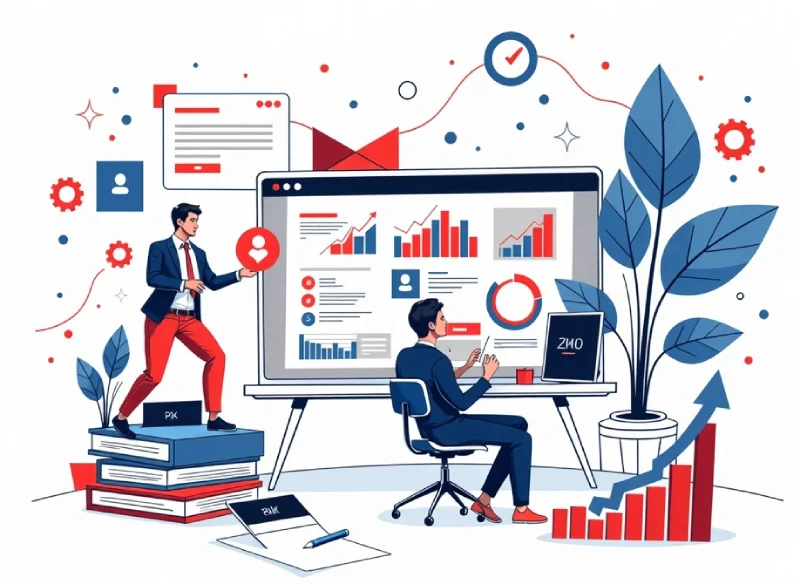
how much does a website design cost in dubai? It’s a simple question that many entrepreneurs and businesses in the UAE’s most vibrant city find themselves asking. If you’re sipping a coffee under the shadow of the Burj Khalifa, dreaming of launching your own website, you might be curious—and perhaps a bit anxious—about the price tag attached to that dream. The reality is that the cost can range wildly. Think of it like buying a car: you could spend as little as the price of a basic sedan or as much as a luxury sports car, depending on the model. In the world of web design, a basic one-page site for a local café might only set you back a few thousand dirhams, while a feature-rich e-commerce platform for a large retailer could run into the hundreds of thousands.
This wide spectrum in website design cost is not unique to Dubai, but Dubai’s dynamic market does have its own twists. With around 99% of the UAE population (over 11 million people) using the internet as of 2025, and an ever-growing appetite for online services, having a strong website is practically essential for any business. The demand is high, and so is the quality bar—if your website is going to stand out in a city known for its skyscrapers and cutting-edge innovation, it needs to be good. But excellence comes at a price. So how much does a website design cost in Dubai, really? In general, professional web design services in Dubai can start at a few thousand dirhams for a simple web presence and go up to well over a hundred thousand dirhams for a sophisticated, custom-built online platform.
Rather than tossing out one arbitrary number, let’s dive deeper. What factors cause such a dramatic difference in pricing? How do different types of websites (from a simple blog to a full-fledged online store) fall on the cost spectrum? Is it cheaper to hire a freelancer, or should you invest in a top-tier agency? And importantly, how can you make sure that whatever you spend is truly worth it for your business?
Below, we’ll explore all these questions in detail. By the end of this comprehensive guide, you’ll not only have a sense of how much a website design might cost in Dubai, but also understand why it costs that much—and how to get the most value for your money.
Factors Influencing Website Design Cost in Dubai
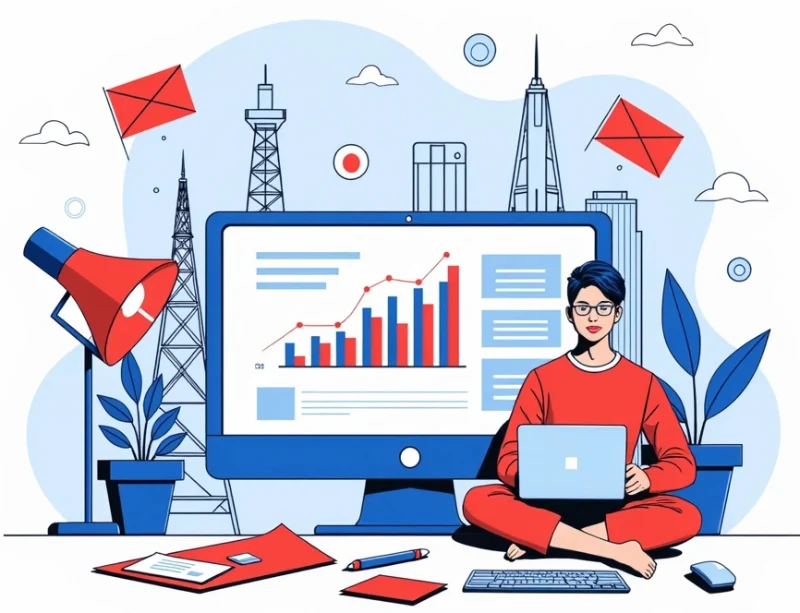
When it comes to website design cost in Dubai (or anywhere), there isn’t a single formula – it’s determined by a mix of different factors. Understanding these can help you estimate where on the price spectrum your project might lie. Here are some of the most important factors:
Type of Website and Purpose
The kind of website you need is perhaps the biggest driver of cost. Are you looking for a straightforward informational website (essentially an online brochure for your business), an interactive portfolio, a blog, an e-commerce store, or maybe a full-blown web application? A basic site that just showcases information about your company will be far cheaper than a complex e-commerce platform or a custom portal with user logins and dashboards. For example, a simple five-page website for a consultancy or a small restaurant will generally cost far less than a large online retail site with hundreds of products.
In Dubai’s market, as elsewhere, more complex functionality – such as a shopping cart, payment gateways, or user accounts – means more development time and higher cost. In fact, an e-commerce store with advanced integrations (say, local payment gateways like Tabby or Tamara, or real-time inventory management) will naturally sit on the higher end of the budget spectrum compared to a basic company homepage. For more information, visit the Best eCommerce Web Development Company Dubai content.
Design Complexity and Customization
Another huge factor is how unique and polished you want the site’s look and feel to be. If you’re fine with using a pre-designed template or theme and making minor tweaks, you can save a lot of money. Many smaller businesses in Dubai keep costs down by using popular content management systems (CMS) like WordPress or Shopify with ready-made templates, which provide decent design at a fraction of the cost of a custom job. On the other hand, if you want a custom-designed website – something crafted from scratch to match your brand perfectly – be prepared to pay more for the design labor. Custom user interface (UI) design, interactive elements (like animations or bespoke visual effects), and UX optimization all take significant time. Think of it as the difference between buying a suit off the rack and getting one tailor-made. The tailor-made suit (like a tailor-made website design) fits you perfectly and is one-of-a-kind, but you’ll pay a premium for that craftsmanship. In Dubai, where many businesses aim for a high-end image, investing in a distinctive, upscale web design can be worth the cost – but it will raise the initial price tag.
Content Volume and Pages
The size of your website – usually measured by the number of pages or the depth of content – directly affects cost. A single-page website or a minimal site with just Home, About, and Contact pages will obviously cost less than a sprawling corporate site with dozens or even hundreds of pages. Each page needs design work (even if templates make additional pages somewhat easier, they still require content insertion and tweaking). If your site has multiple sections, product pages, service listings, a blog with many articles, etc., expect the web design cost to increase with each additional cluster of pages.
Content isn’t just about quantity, either; quality matters. If you need professionally written content for those pages and high-quality images, there might be extra fees for copywriting, photography, or stock images. Some Dubai web agencies include basic content creation in their packages, while others charge separately for it. Always clarify this when scoping out a project. (After all, a beautifully designed site isn’t very useful if it has no content or poor content.)
Multiple Languages (Bilingual Websites)
Dubai is a cosmopolitan city with a diverse population, and Arabic is the official language of the UAE. Many businesses need their website in both English and Arabic to reach all audiences. Designing and developing a bilingual (or multi-language) website will push costs higher because effectively you are creating and maintaining two versions of the site’s content. There are design considerations (such as accommodating right-to-left text for Arabic) and possibly separate templates for each language if the design needs adjustments for text length and alignment. All the content needs to be translated and double-checked, and the development needs to ensure seamless switching between languages.
According to industry insights, local Dubai businesses often require bilingual support (Arabic & English) and UAE-specific compliance, which adds to cost. So, if you plan to cater to both English and Arabic speakers (as most serious businesses in the UAE do), budget extra for translation and localization efforts.
Advanced Features and Integrations
Beyond the basic site type, think about what special features you might need. Do you want to integrate your website with a customer relationship management (CRM) system, like HubSpot or Zoho, to capture leads? Do you plan to have an online booking system, or perhaps a live chat support widget? Maybe your site needs to connect to a third-party inventory database, or use maps and location services, or integrate with a payment plan service like Buy-Now-Pay-Later providers. Each integration or advanced feature will typically require additional development work or subscription to external services, incrementally raising the cost.
For instance, adding e-commerce functionality is a big one – setting up product catalogs, shopping carts, secure payment gateways, and order tracking involves a lot more work than a simple static page. Similarly, if you need custom forms that do complex calculations, social media feeds, interactive maps, or any kind of special tool on your site, developers will charge for the time to implement and test those.
Moreover, the underlying technology stack can influence cost; building a site with a basic WordPress setup might cost less than building a highly interactive front-end in React with a custom backend, because the latter demands more specialized (and expensive) coding. One Dubai-focused guide noted that using advanced frameworks or integrating with regional services can increase development cost. The key takeaway: the more you want your website to do, the more you should expect to pay.
Timeline and Urgency
How fast do you need the website? Time is money, especially in the service industry. If you have an urgent deadline – say, you need the site live before a big trade show next month, or you’re trying to launch before a holiday season – many agencies will charge a rush fee to prioritize your project. This might mean paying for overtime or allocating more resources to get it done quickly. In Dubai, it’s not uncommon for businesses to want a fast turnaround for events like the Dubai Expo, Gitex, or other major conferences and seasonal sales. If you approach a web design company and say “I need this done in 2 weeks,” expect the quote to be higher than if you gave them a comfortable 2-3 month timeline. Planning ahead can save you money; one tip often shared by professionals is to plan 6–12 weeks in advance to avoid rush fees. In short, urgent = more expensive, so try not to leave your web project to the last minute. For more information, visit the Web Design Agency New York content.
Revisions and Process
This factor is sometimes overlooked. Different designers and agencies have varying policies on how many design revisions are included in the price. If you’re very particular about the design and foresee multiple rounds of changes, make sure to account for that. More iterations mean more labor. Similarly, if your project requires things like extensive prototyping, user testing, or stakeholder meetings at every phase, those can add to the cost because they consume time. A smooth, efficient process where decisions are made quickly will keep costs down, whereas a project that drags with lots of back-and-forth will push them up. It’s a good idea to have a clear idea of what you want (perhaps by providing examples of websites you like, brand guidelines, etc.) because clarity up front can minimize expensive scope creep later.
Expertise and Reputation of the Designer/Agency
Last but certainly not least, who you hire greatly affects the cost. This overlaps with the next major section (choosing between freelancers vs agencies), but it’s worth stating here: a highly experienced, top-tier web design agency in Dubai will charge more than a solo freelance developer or a smaller, less established firm. You’re partly paying for their expertise, reliability, and track record. An award-winning agency that has built websites for big brands might quote a premium price, and often they deliver a premium service – from robust project management to a team of specialists (UX designers, UI designers, developers, SEO experts, etc.) ensuring your site is top-notch. On the flip side, if you’re on a shoestring budget, you might work with a less experienced developer who can meet your basic needs at a lower cost. Just be aware that with lower cost providers, the development might take longer or the quality might not be as polished (not always, but often). In Dubai’s competitive environment, there are many options at various price points – from budget freelancers to high-end agencies – and their rates might differ dramatically for essentially the same project scope. The range can be something like a few hundred dirhams if you somehow outsource to a student or use a do-it-yourself tool, to many tens of thousands of dirhams with a big agency. We’ll delve more into these choices in the next section, but remember that you get what you pay for usually holds true in web design. The skill, creativity, and support you’re paying for is a significant part of the cost equation.
Typical Price Ranges for Different Websites in Dubai
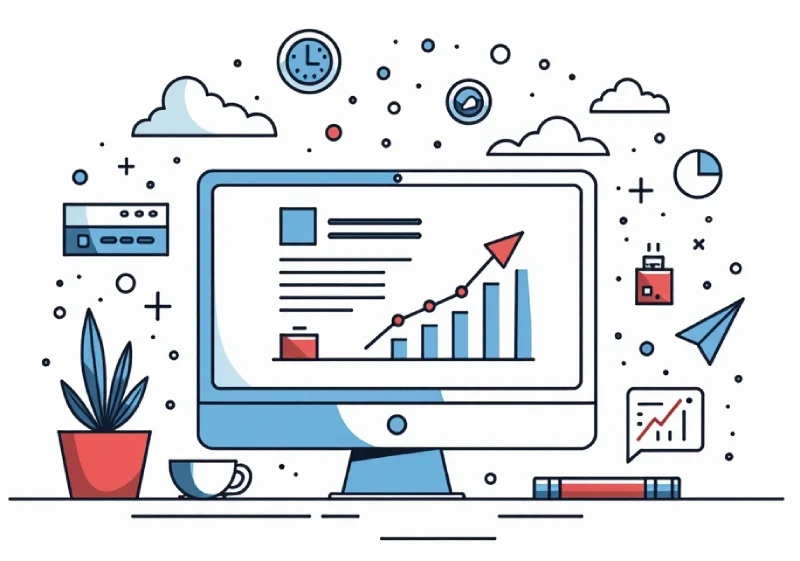
Just as there are different models of cars with different price tags, there are different tiers of websites you might build, each with its own typical cost range. While every project is unique, it helps to look at ballpark figures for common categories of websites in Dubai. Keep in mind these are rough ranges – individual quotes may vary, but these numbers give an idea of what to expect:
Basic Informational Websites (AED 2,000 – AED 10,000)
At the low end of the spectrum, you have simple websites for small businesses or individuals. These might be 1 to 5-page sites whose main goal is to provide an online brochure – think of a local bakery, a freelancer’s portfolio, or a small consulting firm’s site with basic info and a contact form. Such sites often use standard templates and minimal custom features. In Dubai, it’s not impossible to get a basic website for around AED 2,000 to AED 4,000 if you find a budget-friendly freelancer or use a DIY website builder. In fact, some reports cite this range (roughly $600 to $1,000) as a starting point for a bare-bones professional site. However, more commonly, professionally made small-business websites tend to fall a bit higher, say in the AED 5,000 to AED 10,000 range. Within this bracket, you’re usually getting a nicer design, perhaps a custom domain and reliable hosting, and enough pages to cover the essentials (home, about, services, gallery, contact, etc.). There’s typically limited interactive functionality—maybe a simple inquiry form, but no heavy databases or complex integrations. For a lot of new startups or shops in Dubai, this level of website is a popular starting point: it’s affordable yet gives you a credible online presence. For more information, visit the best web Development agency in usa content.
Standard Business Websites (AED 10,000 – AED 25,000)
When businesses need more than just a basic online brochure, costs move into this mid-tier. Websites in this category might include additional features like a blog section, photo galleries, perhaps some basic e-commerce capability (like a simple catalog or the ability to accept payments for a few products), or integration with services like mailing list sign-ups. They often involve more bespoke design elements or at least significant customization of templates to match the company’s branding. A site for a boutique hotel, a medical clinic, or a mid-sized professional services firm might fall here. In Dubai’s pricing context, these websites typically run somewhere between roughly AED 10,000 and AED 25,000 for design and development. This range allows for hiring a reputable local agency or a very experienced freelancer to craft a polished site with perhaps up to 10-15 pages of content and moderate interactive features. The upper end of this bracket might include advanced content management setup so the company can update news or posts easily, and perhaps some multilingual support or custom visuals. Essentially, you’re paying for a more refined and feature-rich site compared to the basic tier.
E-Commerce Websites (AED 15,000 – AED 50,000)
If you’re planning to sell products or services online, the cost goes up because of the complexity involved. An e-commerce site isn’t just displaying information – it’s a full storefront that needs to handle inventory, shopping carts, checkout processes, payment gateways (like integration with credit card processors or local options like Tabby/Tamara or COD), order tracking, and possibly user accounts. Even relatively small online shops require a lot of setup and testing to make sure transactions work smoothly and securely. In Dubai, a typical e-commerce website design might start around the mid-teens in thousands of dirhams and can range up to about AED 40,000 or 50,000 for a more comprehensive online store. Closer to AED 15,000 would likely be a small e-commerce site (perhaps a local boutique with a few dozen products, using a platform like Shopify or WooCommerce with a standard template). At the higher end (tens of thousands of dirhams), you’d expect a larger catalog (hundreds of products), more custom design to give your store a unique brand identity, integration with other systems (for instance, connecting the website to your point-of-sale or inventory management software), and enhanced features like customer reviews, multiple languages, or advanced shipping options. E-commerce development also includes rigorous testing (no store owner wants to find out that customers can’t complete checkout due to a bug). So, part of what you pay for is ensuring reliability and security. It’s worth noting that these costs often exclude ongoing expenses like payment gateway fees or extensive marketing integrations – those could add more if you choose to include them. But as a one-time design/build cost, AED 15k–50k is a realistic ballpark for a professional online store in Dubai. (Of course, if you have a truly massive e-commerce operation in mind – think Amazon-level complexity – that’s another story and budget entirely.)
Large Corporate or Custom Web Applications (AED 50,000+): This is the high end, where budgets of AED 50,000 to AED 100,000 or even more come into play. These kinds of projects are usually undertaken by established companies, government organizations, or startups with significant funding who need something beyond a standard website. We’re talking about highly customized solutions: for example, a corporate website with multiple user roles and portals (imagine a bank’s site where customers can log in to their accounts, or an insurance company with quote generation tools), or a complex web application such as a marketplace platform that lets third-party vendors sell, or a specialized booking system, etc. The design and development here are often done from scratch, involving teams of UI/UX designers, front-end and back-end developers, database experts, and so on. Often these projects also include integration with enterprise systems (like an SAP backend, or a CRM, or other internal software) and require meeting strict security, performance, and scalability standards. In Dubai, agencies do handle such large-scale projects and will price them accordingly. You might be looking at a timeline of several months of work and a whole lot of features to test and refine. It’s not unheard of for a very elaborate website or web app to cost around AED 100k or more; in fact, some full-scale corporate websites and portals can approach the AED 150,000 mark in some cases. For instance, if you needed a bilingual e-commerce marketplace with real-time trading features and an augmented reality module – something very niche and complex – your budget could soar. The key point is that for most typical business needs you won’t need to spend this much, but it’s important to know that this tier exists. When you hear about a major corporation doing a digital transformation and launching a new online platform, this is the ballpark they might be in. At this level, you are paying not just for design and coding, but for consultation, planning, extensive testing, and often a degree of ongoing support after launch. High-end agencies in Dubai will often include strategic consulting in the project – making sure the website aligns with your business goals and offers top-notch user experience – and those services come at a premium.
DIY vs. Freelancers vs. Agencies: Impact on Cost and Quality
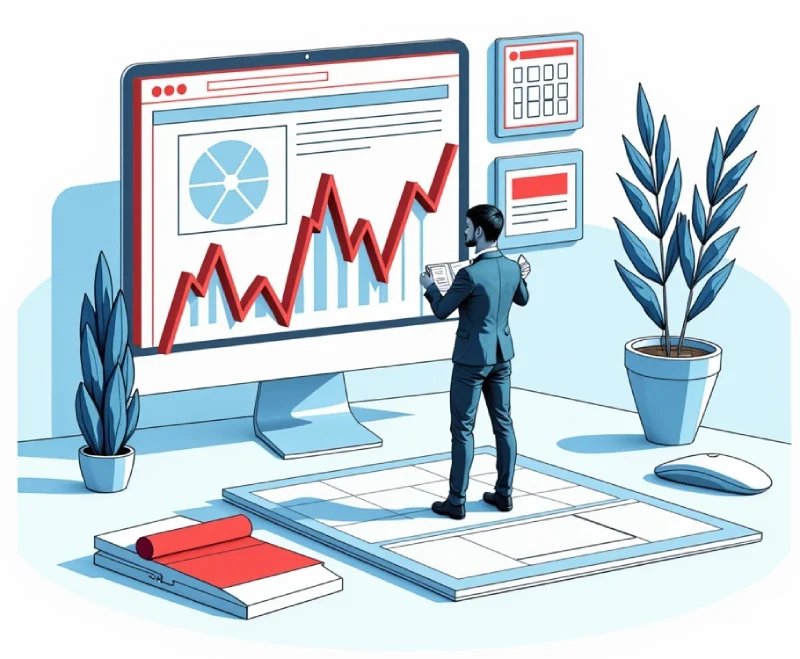
When planning a website in Dubai, an important decision is who will build it. You generally have three routes: do it yourself (DIY), hire a freelance web designer/developer, or hire a web design agency. Each option comes with its own cost implications and trade-offs in terms of quality, speed, and effort. Let’s break down how each choice can influence the final cost of your website design (and what you get for that cost).
Do-It-Yourself (DIY): This is the cheapest way to get a website up and running, at least in terms of cash outlay. If you’re tech-savvy (or determined to learn), you might use website builders like Wix, Squarespace, or WordPress (with a pre-made theme) to create your site. The primary costs here are your domain name (maybe around 50–100 AED/year), hosting (could be as low as a few hundred dirhams a year for a basic plan), and perhaps a premium theme or plugin or two (another couple of hundred dirhams). All told, you could potentially get a simple site online for well under AED 3,000 if you do everything yourself. In fact, many entrepreneurs start this way to save money. Some estimates put the DIY approach at only a few hundred dollars (a few thousand dirhams) in material costs, which aligns with what we see in practice. However—and this is a big however—your own time and skill become factors. Building a decent website, even with user-friendly tools, is time-consuming if you’re new to it. There’s a learning curve to make things look professional. And while templates get you 80% of the way, the remaining 20% (tweaking design, optimizing images, ensuring the site is mobile-friendly and SEO-friendly) can be tricky. DIY sites also often lack the polish of professionally designed sites; for example, a DIY site might not be fully optimized for search engines or might have a generic look that doesn’t stand out. One industry guide bluntly notes that DIY websites often lack strong SEO, custom design elements, and advanced functionality compared to professionally built sites. In short, the DIY route can save you money, but it “costs” you in personal labor and potentially in the quality and performance of the final site. It’s a viable option if your budget is extremely tight and your needs are very basic (say, a personal blog or a simple informational page for your business) – and if you have more time than money at the moment.
Freelance Web Designer/Developer: Going with a freelancer is a middle-ground option. Dubai has a pool of freelance web professionals, as well as many overseas freelancers who can work remotely. When you hire a freelancer, you’re typically going to pay more than the pure DIY route (because now you’re paying for someone else’s time and expertise), but often less than what an agency would charge for the same project. Freelancers have lower overhead costs – it might just be one person or a small team working from home – so they can often afford to price more competitively. For a standard business website, a freelancer in Dubai might charge anywhere from maybe AED 5,000 to AED 20,000, depending on their experience and the complexity of the site. Some very experienced freelancers might charge more, but generally if your budget is in that range, you can likely find a freelancer to work with. Global estimates (which often align with local trends) suggest freelancers might charge on the order of a few thousand dollars for a website – say $3,000 to $10,000 (approximately AED 11,000 to AED 37,000) for a typical small-to-medium website. That overlaps heavily with the mid-tier range we discussed earlier. The advantages of a good freelancer are that you often get personal attention, direct communication with the person doing the work, and flexibility. Many freelancers will tailor the project to your exact needs and can be quite fast if they’re proficient. On the downside, a single freelancer can only juggle so much. If your project is large or you need things done by a tight deadline, they may struggle or charge more to put in extra hours. Quality can also be hit-or-miss – there are fantastically talented freelancers whose work rivals any agency, and there are others who might over-promise but under-deliver. You have to do a bit of due diligence: look at their portfolio, maybe ask for client references, and ensure their style fits what you want. Also, consider ongoing support: if your freelance developer is unavailable (say they take a full-time job or move on to another project), you might need to find someone new for updates down the line. In summary, hiring a freelancer in Dubai is usually a cost-effective way to get a professional-looking site, especially for small to mid-sized projects, but be sure to vet their capabilities and plan for what you’ll do if you need future changes or maintenance.
Web Design Agency: This is the premium option. Agencies range from small boutique studios to large companies with big teams. When you hire an agency in Dubai, you’re typically paying for a full package of services and a breadth of expertise. An agency will often have multiple specialists – graphic designers, UX/UI experts, front-end developers, back-end developers, content strategists, SEO experts – all contributing to make your website as good as it can be. They also have project managers to keep things on track and ensure good communication. All this naturally comes with higher costs. An agency might quote prices anywhere from around AED 15,000 on the very low end (for a straightforward small website, perhaps done by a smaller agency) to AED 50,000 or above for more complex projects. As we saw in previous sections, agencies in Dubai have been known to charge up to the six-figure range (100k+ AED) for large corporate sites. One data point from a web industry survey indicated a custom website design from a professional agency can cost on the order of $15,000 to $30,000 (AED 55k–110k) for a simple website, and $40,000+ for more complex websites – which aligns with the upper-end we’ve discussed. So yes, agencies are the most expensive route. What do you get for that premium? For one, experience and reliability. A well-established agency likely has a track record of successful projects. They bring a level of polish in design and functionality that is hard to match. They also tend to deliver a more holistic product – not just a pretty design, but also attention to performance (fast loading), security best practices, mobile optimization, and often training you on how to use your new site. An agency in Dubai will also be up-to-date on the latest design trends and tech, and they understand local business norms and consumer behavior, which can be a subtle but important advantage. Working with an agency can also save you time and headache; they manage the project, so you don’t have to coordinate between different freelancers or do as much hands-on tweaking yourself. The downside, of course, is cost. You’re paying for that project manager’s salary, the office on Sheikh Zayed Road (in some cases), and the comfort of knowing a team is on standby to fix issues if they arise. For many small businesses, an agency might be overkill if all they need is a basic web presence. But for a company that has the budget and genuinely needs a top-notch website or web application, an agency is often worth the investment. As the saying goes, “you get what you pay for,” and in web design, an agency-built site often exemplifies that in terms of quality and long-term support.
To decide among these options, consider the stakes and requirements of your project. If your website is just a minor part of your business or a personal project, DIY or a freelancer could be perfectly fine. If your website is mission-critical – say, you’re launching an online store that will be a primary revenue stream, or you have a brand image to uphold at a high level – then investing in an experienced freelancer or agency is likely the smarter move. Some businesses even start with a DIY or low-budget site to validate their concept, then invest in a professional redesign later once they have more funds. The great thing is that in Dubai you can find options at every price point. Just remember to account not only for the immediate cost but also the potential long-term costs: a cheaply made site might need to be redone sooner (or could turn off customers), whereas a well-made site might serve you well for years.
Local Market Insights: Dubai’s Web Design Scene
Dubai’s business environment brings a few unique twists to the website design equation. It’s worth touching on some local market insights that can influence both the cost and the approach to web design projects in the city:
High Competition in Certain Industries: Dubai is a regional hub for sectors like real estate, hospitality, finance, and luxury retail. In these fields, having a top-tier website isn’t just nice-to-have – it’s expected. If you’re a high-end restaurant or a luxury car dealership in Dubai, your website likely needs to look as sleek and premium as your physical storefront, which often means extra investment in design and content. Similarly, real estate and finance websites here often pack in features like interactive property maps or custom calculators to stay competitive. One local analysis pointed out that in sectors like real estate or fintech, companies end up pouring more resources into custom website work (advanced interactive features, meticulous design, local SEO optimization, etc.) to outshine rivals. This of course raises costs in those niches, but the flip side is they often see it as necessary spending for a strong ROI (if a more impressive website brings in big clients or investors, it pays for itself). So, the industry you’re in can influence how much you need to spend – a small boutique might get by with a cheaper site, while a finance startup competing with global banks might allocate a much bigger web budget to appear equally credible and cutting-edge.
Global Talent and Cost Advantages: Dubai is known for its diverse, international workforce, and that extends to tech and design. There are web design agencies and freelancers from all over the world operating here, either physically or remotely serving Dubai clients. This means as a client you have access to a broad range of pricing. Some agencies might have development teams partially based in countries where operating costs are lower, allowing them to charge somewhat less while still delivering quality. Interestingly, some experts note that getting a website designed in Dubai can be less expensive than in some Western markets for comparable quality. That might seem counter-intuitive given Dubai’s image as a luxury destination, but because the city is so globally connected, businesses can tap into competitive pricing. For example, a company here might hire an Indian or Eastern European development firm that has a branch or partner in Dubai – you get local account management and understanding of the market, but the actual development might happen elsewhere at a lower cost base. Additionally, Dubai’s tax-free business environment (no corporate or income tax until recently) historically kept overheads a bit lower for local companies, sometimes reflecting in service pricing. Of course, this doesn’t mean “cheap” – a quality-focused Dubai web agency will still charge premium rates – but when you compare top-tier agencies in Dubai with those in, say, New York or London, you might find Dubai offers slightly more bang for your buck in some cases.
Cultural and Linguistic Considerations: We’ve already discussed the prevalence of bilingual websites (English/Arabic) and how that can add to costs. It’s worth re-emphasizing in a local context: if your business targets the local market, having at least an Arabic version of your site can significantly broaden your reach. Many Dubai businesses invest in not just translating the text, but also adapting the design and imagery to resonate with local culture (for instance, using regionally relevant visuals, ensuring colors and layouts are appealing to Middle Eastern aesthetics, etc.). While this is more about design strategy than cost, it ties back to cost when you realize that doing this well might involve hiring professional translators, perhaps an Arabic UX consultant, and creating two sets of graphics or layouts for certain sections. All that can edge the price upward, but it can be crucial for effectiveness in the UAE market.
A Thirst for Innovation: Dubai markets itself as a city of the future – think of all the smart city initiatives, tech conferences, and the push for innovation. This ethos can influence web design trends locally. Businesses here often want the “latest and greatest” for their websites: whether that’s a cool 3D product viewer, an AI-driven chatbot for customer service, or integration with a new local super-app. Keeping up with these desires can mean that web designers must constantly update their skill sets and toolkits. From a cost perspective, if you want something cutting-edge on your site (like maybe a bit of VR/AR functionality for a real estate walkthrough, or a custom AI integration), be prepared that not only will it cost more due to complexity, but not every agency or freelancer will have the expertise, potentially narrowing your choices to higher-end providers. The good news is that Dubai’s web design community is quite forward-thinking – there’s a general enthusiasm to try new things, and early adopters often benefit from the buzz that comes with being innovative. Just remember that being a trailblazer tech-wise on your website might carry a premium until those technologies become more commonplace.
Overall, Dubai’s web design scene is vibrant and diverse. There’s a healthy competition among agencies, which can be good for clients shopping around (you might get a range of quotes for the same project). And there’s a high bar for quality in many industries, driven by the city’s penchant for excellence. Understanding these local dynamics can help you appreciate why a quote is high or low: sometimes you’re paying a bit extra because an agency knows your competitors are spending big on their sites, or you’re getting a deal because the provider has found a cost-efficient way to deliver the service. The key is to find a solution that fits your market needs without unnecessary extras that drive up cost.
Why Investing in Quality Web Design Pays Off
By this point, it’s clear that getting a high-quality website in Dubai can require a significant investment. Naturally, any business owner or manager will ask: is it worth spending, say, AED 20,000 or 50,000 on a website when there are cheaper options? The answer often comes down to return on investment (ROI). A well-designed website isn’t just a pretty face – it can directly contribute to your business’s success in multiple ways that justify its cost over time.
First, consider visibility and traffic. A professionally built website is more likely to be optimized for search engines and user experience, which means it can attract more visitors. For instance, developers who know what they’re doing will structure your site’s code and content in a way that Google likes, helping you rank higher in search results for your keywords. More visibility on search engines = more potential customers finding you. Additionally, a good site will be mobile-friendly and fast-loading (crucial for SEO and for users who might otherwise leave in frustration). One expert observation is that a strategically designed website – with proper SEO, mobile responsiveness, and speedy performance – tends to drive more qualified traffic to your business. These are visitors who are actively searching for what you offer, meaning they’re more likely to convert into leads or sales. If you increase your web traffic by, say, 50% because your site is now appearing on the first page of Google instead of the second, that can lead to a substantial uptick in inquiries or sales, easily paying back what you spent on design.
Next, think about conversion and credibility. Getting visitors to your site is only half the battle; the site needs to convince them to take action (buy something, contact you, sign up, etc.). This is where good design and user experience (UX) truly shine. A modern, clean, and intuitive design immediately builds trust. People tend to judge a business by its online presence – much like you’d judge a physical store by how it looks and feels when you walk in. If your website looks outdated, cluttered, or is hard to navigate, visitors may question your professionalism and click away. On the other hand, if it looks polished and everything works smoothly, they’ll feel more confident in your business. There’s a known effect in marketing: good design increases perceived credibility, which in turn boosts conversion rates. As one resource put it, design influences trust, and elements like a clean layout, easy navigation, and fast pages help convert more of your visitors into customers. In a city like Dubai – where consumers are used to high standards – a slick website can be the deciding factor that makes someone choose your business over a competitor’s. Imagine you’re searching for a service and you find two companies: one has a slow, clunky site and the other has a state-of-the-art site with all the info you need. It’s obvious which one leaves a better impression.
Quality web design can also reduce costs or increase efficiency in the long run. For example, a well-built site might include features that save you operational expenses: an online booking system could reduce the workload on your receptionist, or a detailed FAQ page could cut down on customer support calls. If your site has e-commerce, that can expand your sales without needing additional physical stores. Some businesses discover that investing in certain web features (like a client portal or automated quote generator) greatly streamlines their processes, allowing them to handle more customers with the same resources. While these features add upfront cost, they can lead to ongoing savings. Moreover, a robust site built by professionals will generally be easier to maintain and update (or it’ll come with training/documentation on how to manage it). That means you’ll spend less time fighting with the site or paying for emergency fixes. It’s built to last, scalable for future needs.
There’s also the factor of longevity and adaptability. Cutting corners with a super cheap website might solve your immediate need, but it could age poorly or break when you try to extend it. If you invest in good development now, you’re more likely to have a site that can grow with your business for years without needing a complete overhaul. In other words, you’re future-proofing your digital presence. Given how fast technology and design trends evolve (what looked cutting-edge in 2018 might look stale today), working with experts ensures your site is built with modern standards and can be updated to keep pace with new trends or devices.
Finally, consider less tangible but important benefits: a great website can elevate your brand image. It shows that you care about quality and user experience. This can open doors – from attracting big-name clients who are comforted by your professional online appearance, to impressing potential investors or partners doing their due diligence on your company. In Dubai’s networking-heavy business culture, you never know who might check out your website after a meeting or a conference. Having a site that tells your story compellingly and looks world-class can leave a lasting positive impression.
In summary, while the cost of website design in Dubai can be significant, the potential returns – in more traffic, better customer conversion, improved efficiency, and stronger brand reputation – are equally significant. Many companies have found that the website ends up being one of their best investments, essentially becoming a round-the-clock salesperson that generates value every day. Of course, maximizing that ROI depends on doing the project right (strategy, execution, content, all of it), but when it all comes together, a high-quality website can more than pay for itself over time.
Tips for Getting the Best Value Within Your Budget
As you approach a web design project – especially after learning about all these cost factors – it’s natural to wonder how to keep the expenses reasonable without sacrificing quality. Here are some final tips to help you get the most bang for your buck when designing a website in Dubai:
Clarify Your Goals and Requirements: Before you even talk to designers or agencies, spend time defining exactly what you need your website to do. What are the “must-have” features vs. the “nice-to-have” features? Who is your target audience and what will they be looking for on your site? By having a clear vision and a prioritized list of requirements, you can prevent unnecessary additions that bloat the project (and the budget). This also helps you communicate effectively with your web designer. If you hand them a crystal-clear brief (“I need an online portfolio with X pages and a contact form” or “I need an e-commerce site for ~100 products with a payment gateway and bilingual support”), they can give you a more accurate quote and are less likely to build something you didn’t want. Unclear requirements often lead to scope creep – where the project keeps expanding – which is a notorious budget killer. So, define your scope and try to stick to it.
Set a Realistic Budget Range: It’s a good idea to determine internally what budget range you’re comfortable with, and communicate that to your potential designer/agency. In Dubai, as we’ve seen, that could be a broad range, but maybe you decide “I’m willing to spend up to AED 15,000” or “I have AED 30k as a cap, but I’d love to keep it around 20 if possible.” By being upfront (at least when asked) about your budget, you allow the professionals to tailor a proposal that fits. Many web agencies will propose different tiers – for example, a basic option vs. a more expensive option with extra features – and you can choose based on value. If everyone is in the dark about budget, you might waste time with proposals that overshoot or undershoot your expectations.
Get Multiple Quotes and Compare Value (Not Just Price): Don’t hesitate to reach out to several web designers or agencies to get quotes. Provide each with the same project brief and see what they come back with. You might be surprised how much quotes can vary. One might quote AED 10k, another AED 25k for essentially the same requirements. But here’s the key: don’t automatically go with the cheapest. Look at what each is offering. Examine their portfolios – do you like the websites they’ve made? Talk to them and gauge their professionalism and understanding of your needs. Sometimes a higher quote comes from a team that really “gets” your vision and has included some extra value (like better support or some marketing SEO setup) in their proposal. Conversely, a very low quote might mean they’re cutting corners or are inexperienced. Think of it like hiring a contractor for a home renovation – the cheapest bid isn’t a bargain if the quality is poor and you have to redo things later. Aim to find a provider who offers the best value: a combination of a fair price, a strong track record, and a clear plan for meeting your needs.
Check References or Testimonials: If you’re engaging an agency or freelancer, it’s perfectly okay to ask for references or look for testimonials/reviews. Many Dubai agencies list client testimonials on their site, or you might know someone who has worked with them. A quick call or email to a past client can reveal a lot about what it’s like to work with that provider, and whether they stayed on budget and schedule. This can give you peace of mind that your money will be well spent.
Plan for Content and Assets: As mentioned, content (text, images, videos) can be an added cost if you need the web designer to handle it. One way to save money is to prepare as much of the content as you can in-house. Perhaps you have a staff member with decent writing skills who can draft the page content, or you can hire a copywriter separately at a lower rate than a full agency. Similarly, gather your logos, photos, and other brand assets in advance. If you don’t have high-quality images, consider investing in a short photoshoot or using affordable stock photos – giving these to your web designer ready-to-go means they won’t charge you for image sourcing or custom graphics (unless needed for the design). Basically, the more you can provide, the less the designer has to create from scratch, which can reduce hours billed. Just make sure what you provide is up to par; low-quality content could undermine an otherwise great design.
Be Open to Phased Development: If your budget right now isn’t enough for everything you want, remember that a website can be an evolving project. You might launch with a core set of features and pages, and add more over time. For example, start with a bilingual site in English and Arabic, but maybe hold off on that advanced client login portal until phase two. Or launch the e-commerce with your top 50 products first, then add the next 50 in a few months. A good developer can structure the site knowing that more will be added later. This phased approach can help spread out costs and get you online sooner rather than waiting until you can afford a huge all-in-one build. Just be sure to prioritize the features that are most critical to your business first (back to the must-haves vs nice-to-haves).
Negotiate Maintenance Upfront: Websites aren’t “set and forget” – they require updates, security patches, occasional tweaks, and eventually new content or features as your business grows. When negotiating with a web designer or agency, discuss what happens after launch. Some agencies include a few months of support in the initial cost, others offer maintenance contracts (for an ongoing fee), and some might just bill per hour for any future work. Knowing this in advance prevents unpleasant surprises. If you’re not very technical, having an ongoing maintenance agreement might be worth it, and you might be able to get a better rate by bundling it upfront when you initiate the project (for instance, they might throw in the first year of maintenance at a discounted rate). If you are comfortable managing the site (or have an IT person), you could opt to handle routine updates yourself to save money – just confirm that the handover will include any training you need. The key is to ensure your shiny new website stays updated and functional without breaking the bank.
Avoid Extreme Rush Deadlines if Possible: We talked about how urgency can increase cost. If at all feasible, give your project a reasonable timeline. Not only will this avoid rush fees, but it also gives the design/development team time to do their best work, resulting in a better product. Websites built in a frantic rush can end up with sloppy code or overlooked details that might cost more later to fix. Planning your project well ahead of when you need it live (think in terms of weeks or a few months, not days) is generally the way to go for both quality and cost control.
In essence, being an informed and prepared client goes a long way. When you understand what drives website costs, you can make smarter decisions at every step – from picking the right partner to focusing on the features that matter most. By clearly communicating, doing your homework on providers, and thinking long-term, you’ll be well positioned to create a website that meets your needs without overspending. And in the ever-evolving digital landscape of Dubai, that’s a win-win situation for your business and your budget.
Conclusion
So, how much does a website design cost in Dubai when all is said and done? By now, you know there’s no single number – it’s a range that slides up or down based on your specific needs and choices. It could be a modest few thousand dirhams for a simple yet professional site, or it could be a hefty investment into the tens of thousands for a feature-rich, tailor-made online platform. What’s important is that you approach the question armed with knowledge: understand the factors at play, decide what level of site your business truly needs, and find the right people to build it.
Dubai’s vibrant market offers options for every budget, and the quality you can achieve even at the lower end is improving all the time. But as we’ve explored, you generally get what you pay for. The cheapest route might save you money now but could cost you opportunities or headaches later, while a bigger upfront investment can yield big returns through a powerful web presence.
Ultimately, the cost of website design in Dubai is an investment in your business’s digital face. When done right, a website isn’t just an expense – it’s an asset that can drive growth, build credibility, and open new opportunities in the online world. Whether you choose to go DIY, hire a freelancer, or bring in the pros, make your decision with a full understanding of the trade-offs. With careful planning and the insights you’ve gained from this guide, you can confidently budget for a website that not only fits your finances but also propels your business forward in the dynamic Dubai marketplace. Good luck with your website project, and may your online venture thrive!


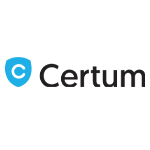
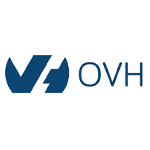

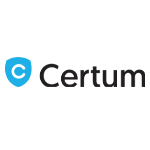


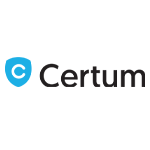
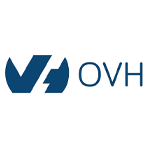
Leave a Reply